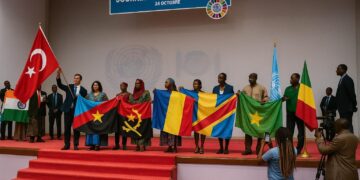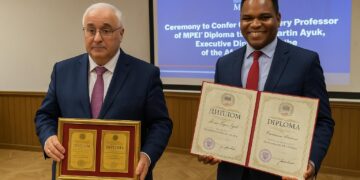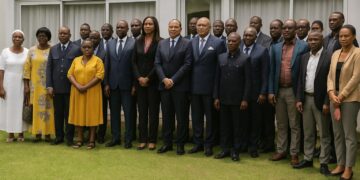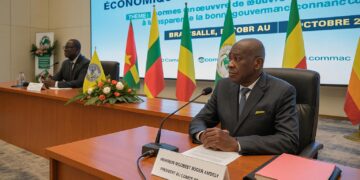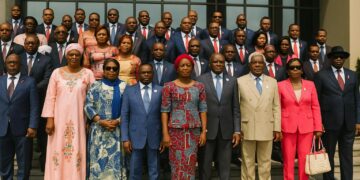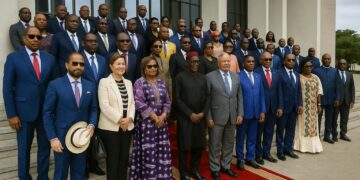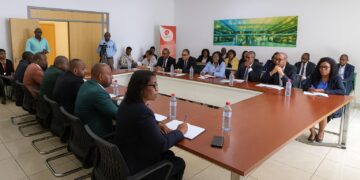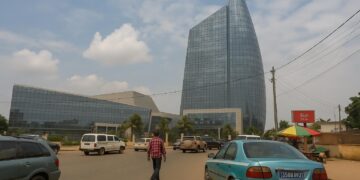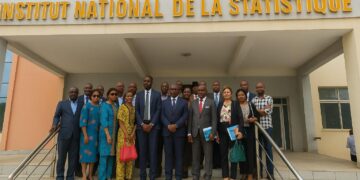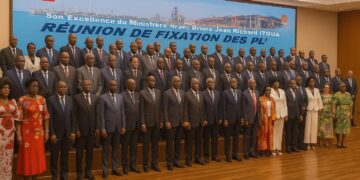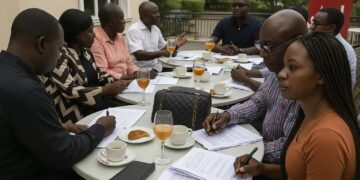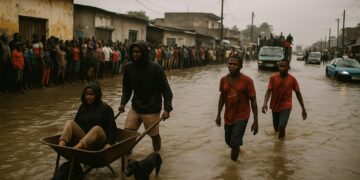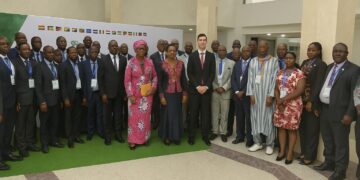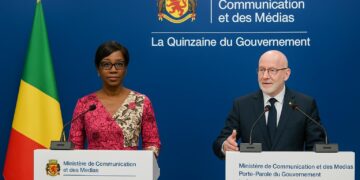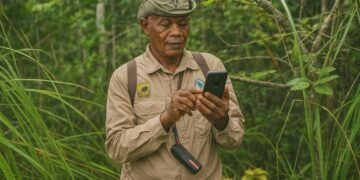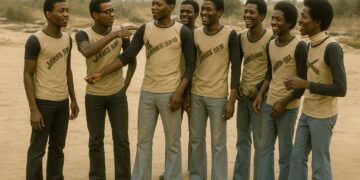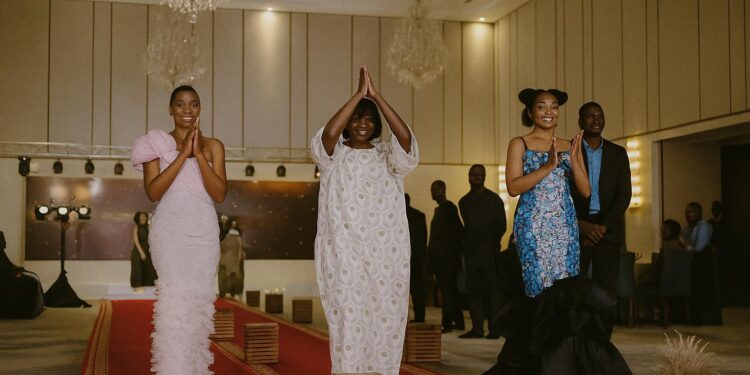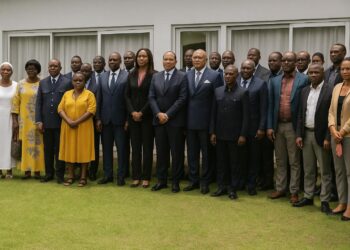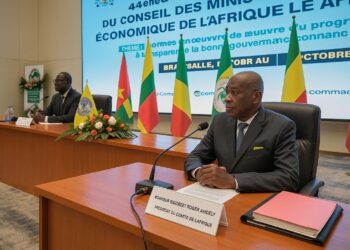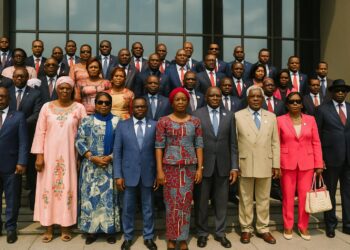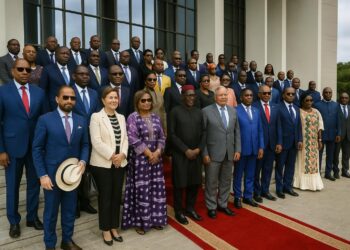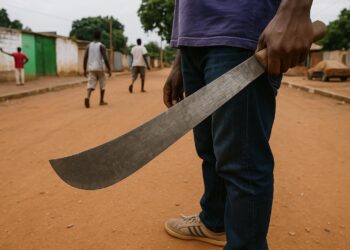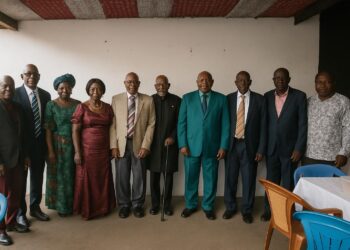Runway Spectacle Signals Cultural Confidence
The July runway of Sako Couture in Brazzaville was never intended to be a mere sartorial exercise. Staged under the resonant title “Between Tradition and Modernity”, designer Penda Sako’s two-year retrospective unfolded before an audience that included senior ministers, diplomats and representatives of international organisations. From the opening percussion sequence, in which dancers draped in raffia evoked Kongo ancestral rites, to the closing procession of satin gowns embellished with cauris, the show translated the Republic of Congo’s cultural confidence into a carefully choreographed narrative.
In a capital that often hosts multilateral conferences on forestry and energy, the evening’s focus on aesthetics might have appeared peripheral. Yet the symbolic weight was unmistakable. By highlighting local fabrics alongside Malian bazin and Asian silks, Sako knitted regional interconnectedness into a single visual story, asserting that Congolese creativity is both rooted and cosmopolitan. The audience responded with sustained applause, while social networks across Central Africa relayed images that quickly became viral touchstones for regional identity.
Heritage as Soft Power Asset
Scholars of cultural diplomacy have long observed that textiles and performance can function as vectors of state narrative. Congo-Brazzaville’s government appears increasingly attuned to this insight. Minister of Cultural Industries Marie-France Hélène Lydie Pongault, present at the event, framed the designer’s work as an “embodiment of collective memory and renewal”, a phrase that echoes the African Union’s 2021 call to reinforce heritage in service of Agenda 2063 (African Union, 2021). By investing political capital in a runway, Brazzaville signals that heritage is not relegated to museums; it is deployed as a living instrument of international engagement.
This approach aligns with a broader continental momentum. UNESCO’s Creative Economy Report notes that fashion and film already employ more Africans than mining (UNESCO, 2022). Congo-Brazzaville’s endorsement of couture therefore possesses twofold utility: it cultivates national pride and positions the country within a lucrative sector projected to reach 69 billion US dollars in Sub-Saharan Africa by 2026 (AfDB, 2023).
Creative Industries and Economic Diversification
Beyond symbolism, the runway resonates with macro-economic strategy. The National Development Plan 2022-2026 identifies cultural industries as a priority for diversification, complementing policies aimed at reducing hydrocarbon dependency. According to the World Bank’s 2023 Congo Economic Update, oil still constitutes over 80 percent of export revenue, leaving the economy vulnerable to price shocks. A modest expansion of the creative sector could therefore have outsized developmental impact, particularly in urban employment where youth unemployment exceeds 20 percent.
Sako Couture already employs a network of local dyers, embroiderers and merchandisers. The brand’s decision to integrate raffia, Guipure and Vlisco prints extends value chains from rural fiber harvesters to regional textile distributors. Such horizontal linkages are precisely what international investors underline when assessing country risk: local content, skills transfer and gender-inclusive growth. As one Brazzaville-based representative of an EU development bank remarked in a post-show interview, “A flourishing fashion ecosystem tells us that non-oil entrepreneurship is gaining traction.”
Diplomatic Audience and Policy Signals
The seating chart at the July event spoke volumes. Alongside cabinet members sat ambassadors from France, Côte d’Ivoire and the United Arab Emirates, each taking notes that extended beyond hemlines. For diplomats, couture functions as a barometer of social stability and governance priorities. Frequent cultural showcases testify to a government willing to allocate public space to creative expression, a factor that think-tanks such as the Institute for Economics and Peace consider in their annual soft-power indices.
President Denis Sassou Nguesso’s administration has, in recent years, multiplied gestures toward the creative sector, including tax incentives for cultural start-ups and the planned rehabilitation of the historic Poto-Poto School of Painting. While budgetary constraints remain, the optics of commitment can unlock multilateral grants under UNESCO’s International Fund for Cultural Diversity, for which Congo-Brazzaville submitted a proposal in March 2024. The runway, televised nationally, thus functioned as a live progress report to potential partners.
Designing Futures Beyond Hydrocarbons
The standing ovation that concluded Sako Couture’s showcase was, to seasoned observers, less about silk trains than about strategic horizons. Fashion, after all, is an industry that internalises future seasons by design. By endorsing a vision where raffia can coexist with Japanese satin, the Republic of Congo articulates a developmental paradigm that marries tradition with global markets. This paradigm resonates with younger demographics whose aspirations are no longer confined to extractive sectors.
Critics caution that creative booms can be brittle without infrastructure and intellectual-property safeguards. The director of the Brazzaville Business School points to the need for vocational training to sustain scaling ateliers. Government interlocutors acknowledge these gaps and cite forthcoming legislation on cultural entrepreneurship, currently before the National Assembly, as evidence of intent. External stakeholders will judge progress by implementation, but the momentum appears tangible.
Ultimately, the July runway suggests that the republic’s soft-power fabric is being woven with deliberation. Should policy coherence persist, Congolese couture could become both a cultural export and a diplomatic calling card, advancing national interests through the universal language of style.


